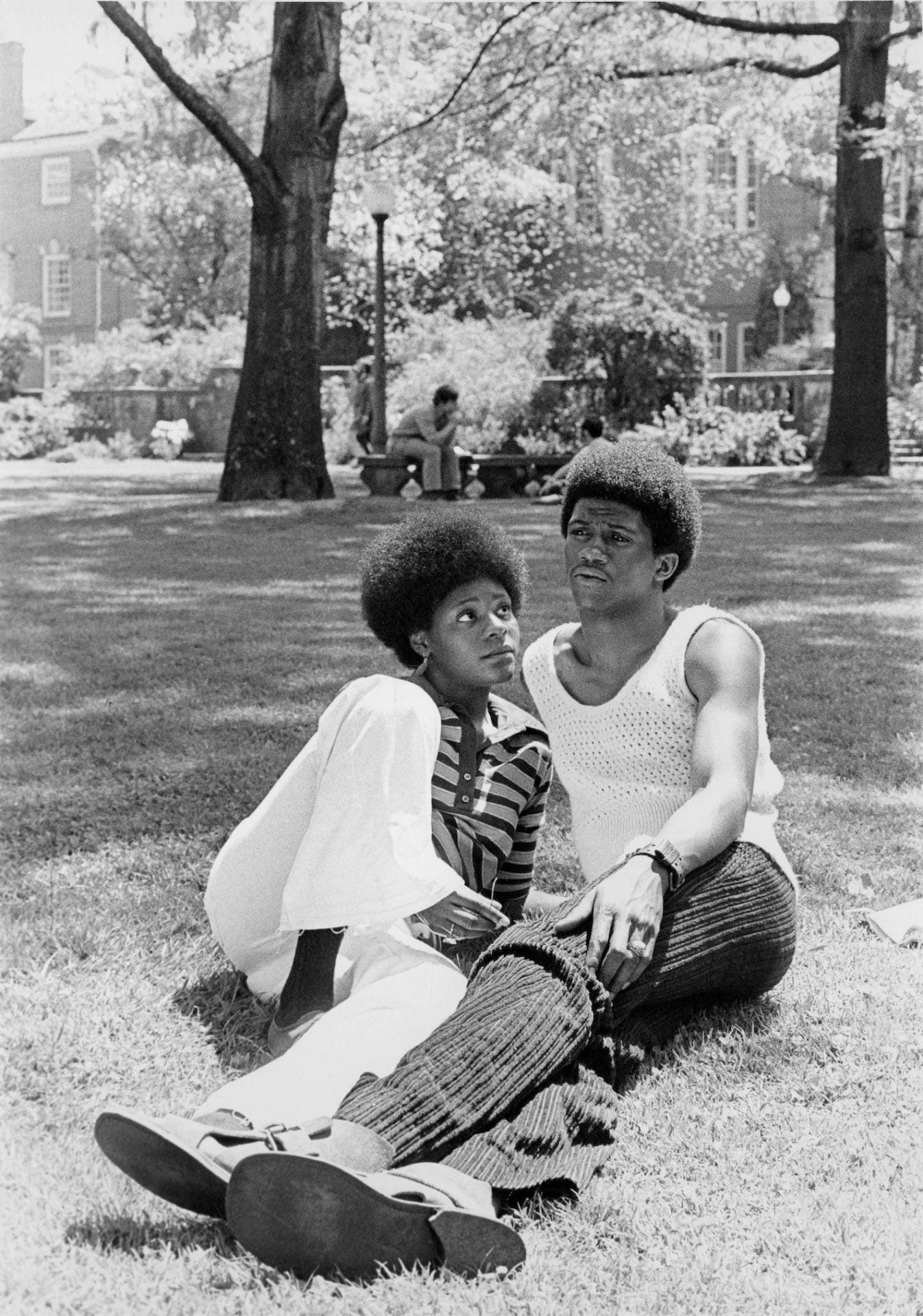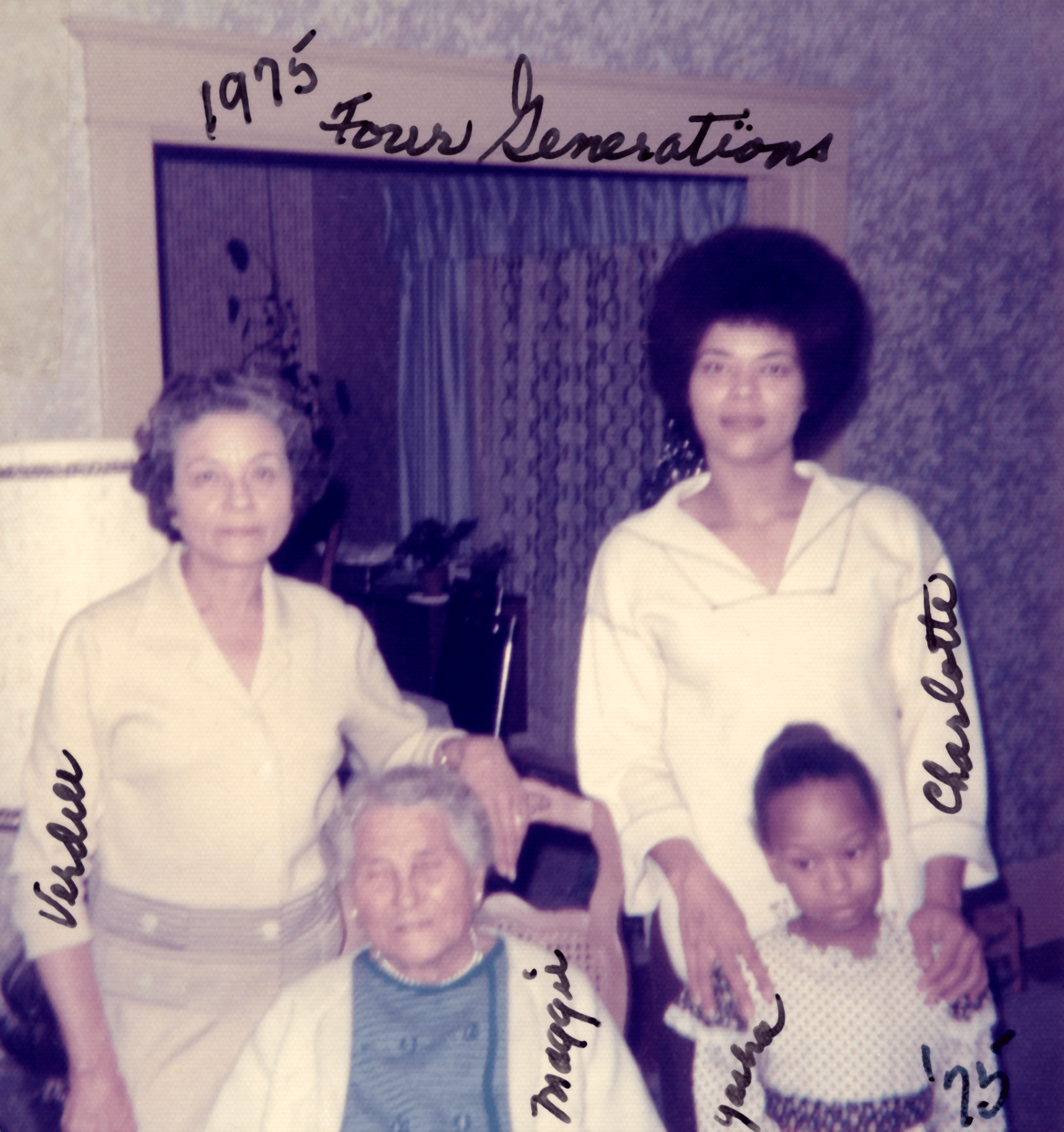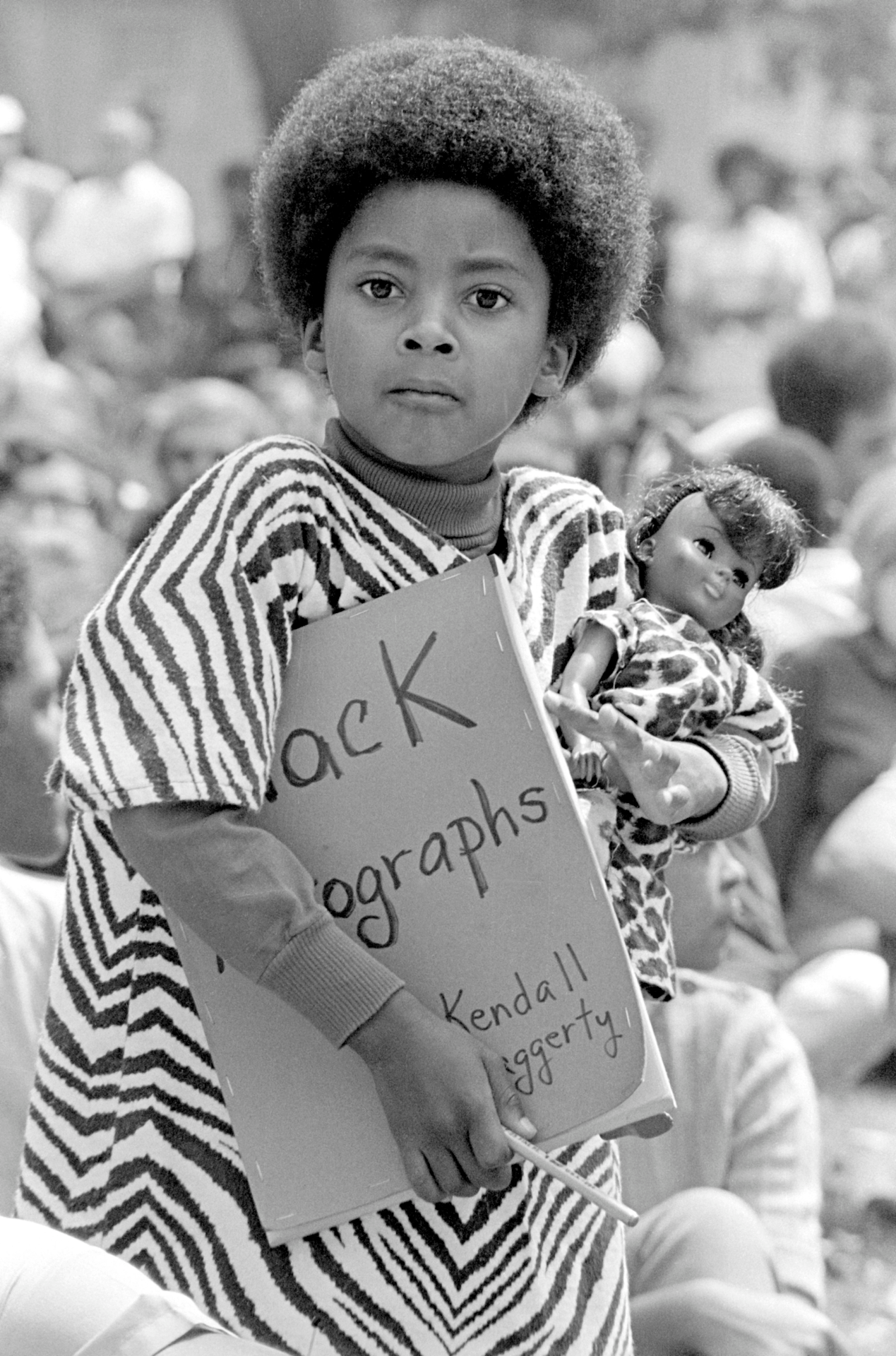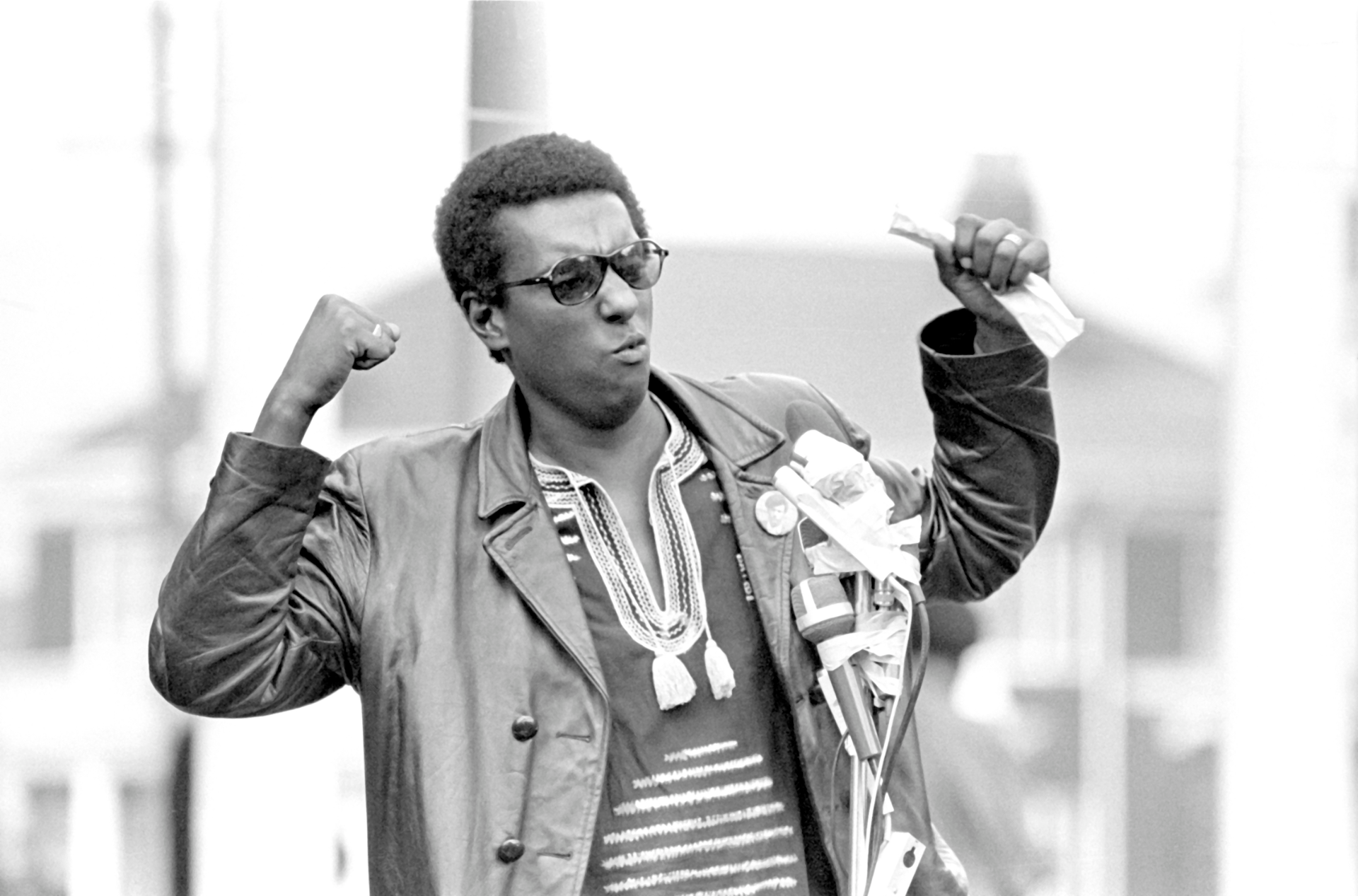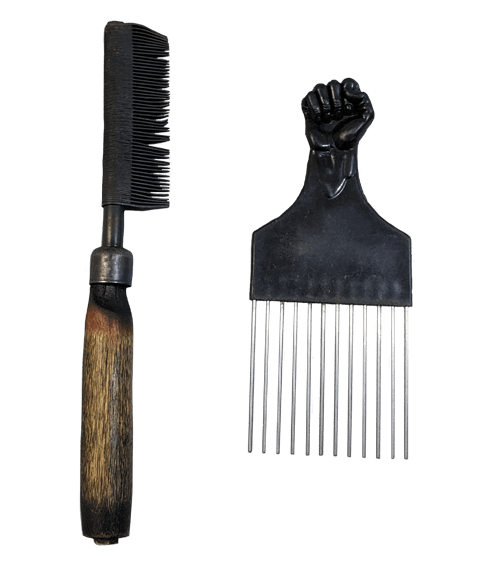I came into adulthood at a time when “black is beautiful” was the expression and it set a tone for my generation in terms of those of us who were politically active, in terms of how we view ourselves and how we view each other. Using the terms brother and sister is still something I do.
—Charlotte Rutherford, community organizer and civil rights lawyer
Four generations of Rutherford women pose in 1975, from left to right: Verdell, Maggie, Charlotte, and Yasha.
Image credit: Verdell Burdine and Otto Rutherford, PSU Library Special Collections
A child holds a Black autograph book.
